Your kitchen cabinets look tired and outdated, but a full replacement costs $15,000 or more. Cabinet refacing seems like the perfect middle ground-new doors, fresh veneer, updated hardware for half the price.
Then reality hits. Peeling veneer after six months. Crooked doors that won’t close right. Hidden damage that makes the whole project pointless.
Thousands of homeowners have walked this path before you. Some got great results that lasted years. Others ended up spending almost as much as a full replacement anyway.
This guide shares real stories from both groups. You’ll learn what goes wrong, why it happens, and how to decide if refacing makes sense for your kitchen. No sales pitches-just honest advice from people who’ve been there.
Common Problems With Refacing Kitchen Cabinets
Real homeowners share these issues again and again in forums and reviews. Most problems fall into five main categories that can turn your budget-friendly project into a costly headache.
1. Veneers That Peel, Warp, or Crack
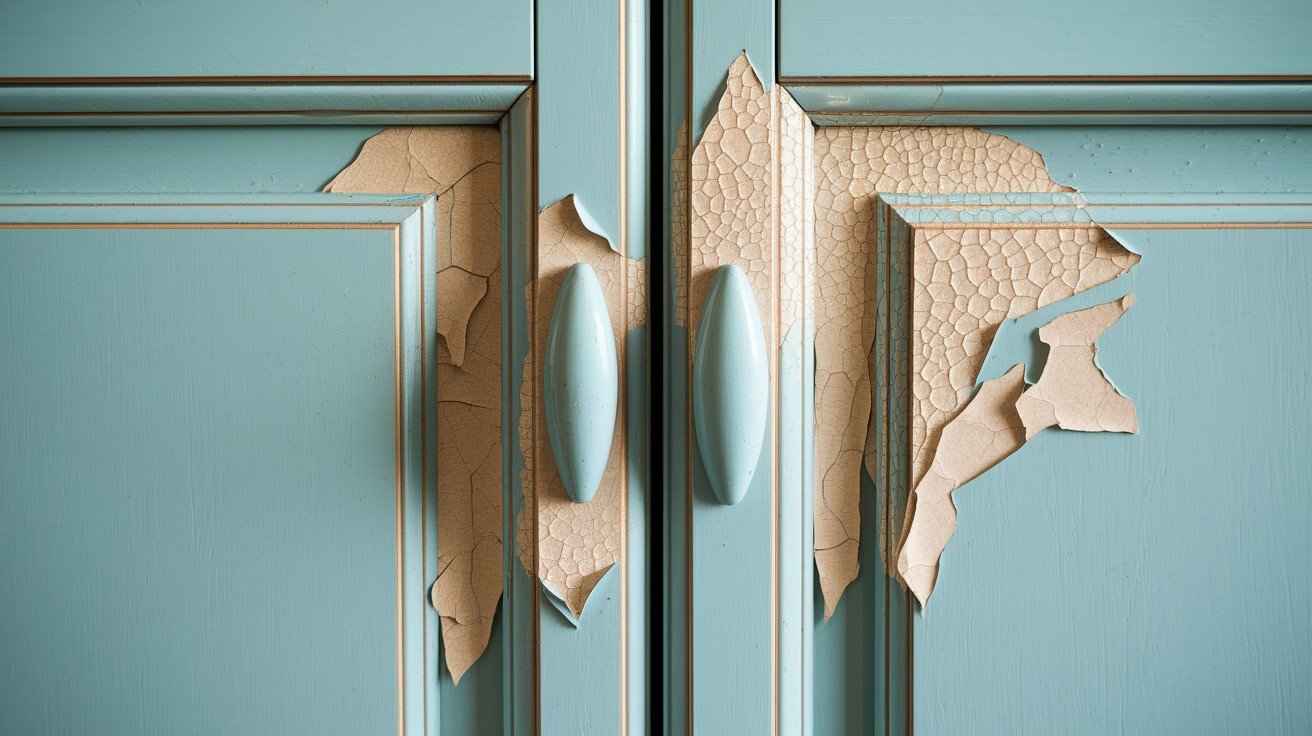
Many users report veneer bubbling and peeling within the first year, especially around sink areas and dishwashers. Kitchen heat and moisture cause cheap adhesives to fail faster than expected.
Poor surface preparation before applying veneer leads to most adhesion problems. Grease, old finish, and uneven surfaces prevent the new veneer from sticking properly to cabinet boxes.
2. Misaligned Doors and Visible Seams

DIYers often struggle with measuring and cutting, resulting in doors that hang crooked or gaps that look uneven. Small mistakes become very obvious when you open and close doors every day.
Older cabinets rarely have perfectly square frames, making it hard to get new doors to fit right. What looks like a simple swap turns into hours of adjusting hinges and trimming door edges.
3. Hidden Structural Damage Left Untouched
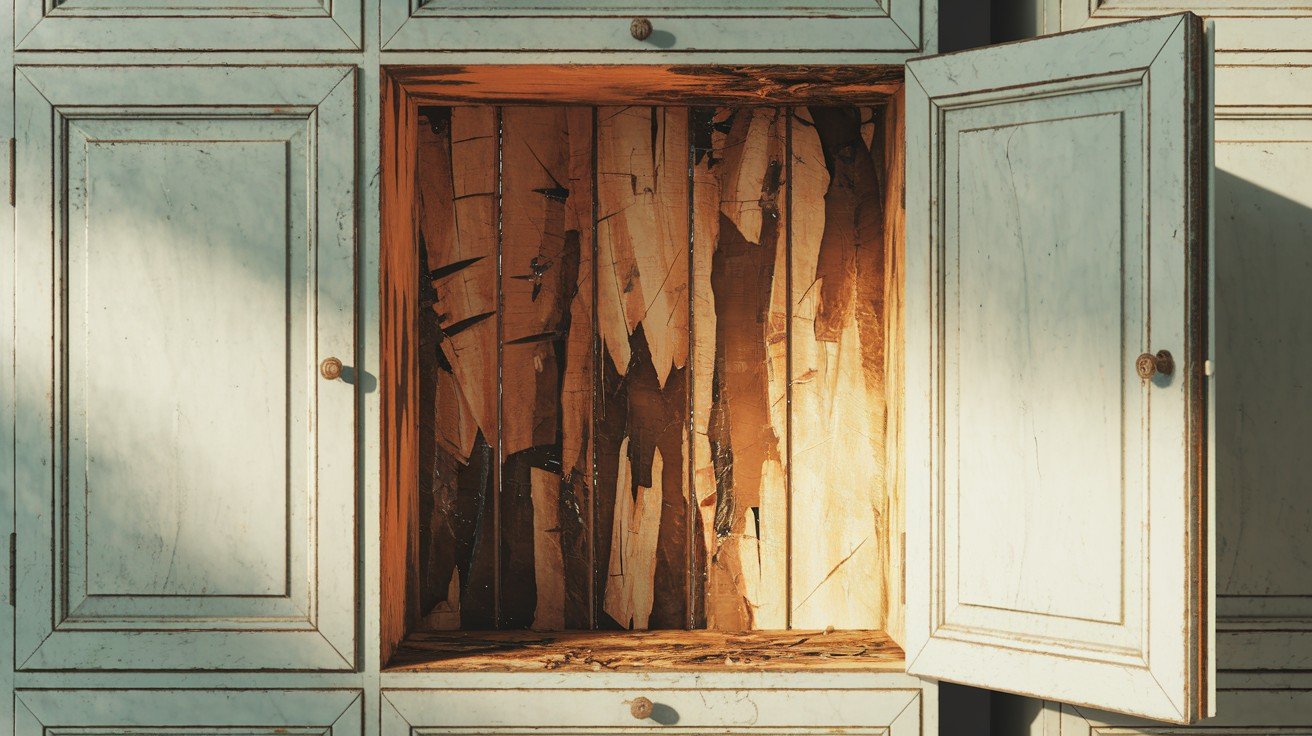
Homeowners spend thousands on refacing only to find rotted cabinet boxes, loose joints, or water damage underneath the new veneer. The pretty new surface hides serious problems that get worse over time.
Refacing covers up issues but doesn’t fix the root causes, like leaky plumbing or poor ventilation. You end up with nice-looking cabinets that still sag, wobble, or fall apart.
4. Budget Overruns and Unexpected Costs

Projects that start at $1,000 often balloon to $5,000 or more when you add new hardware, drawer slides, and professional help. Many underestimate how much time and skill the work requires.
Hidden repairs, tool rentals, and multiple trips to the hardware store add up fast. Comments frequently mention spending almost as much as new cabinets would have cost.
5. Regret From Skipping Full Replacement
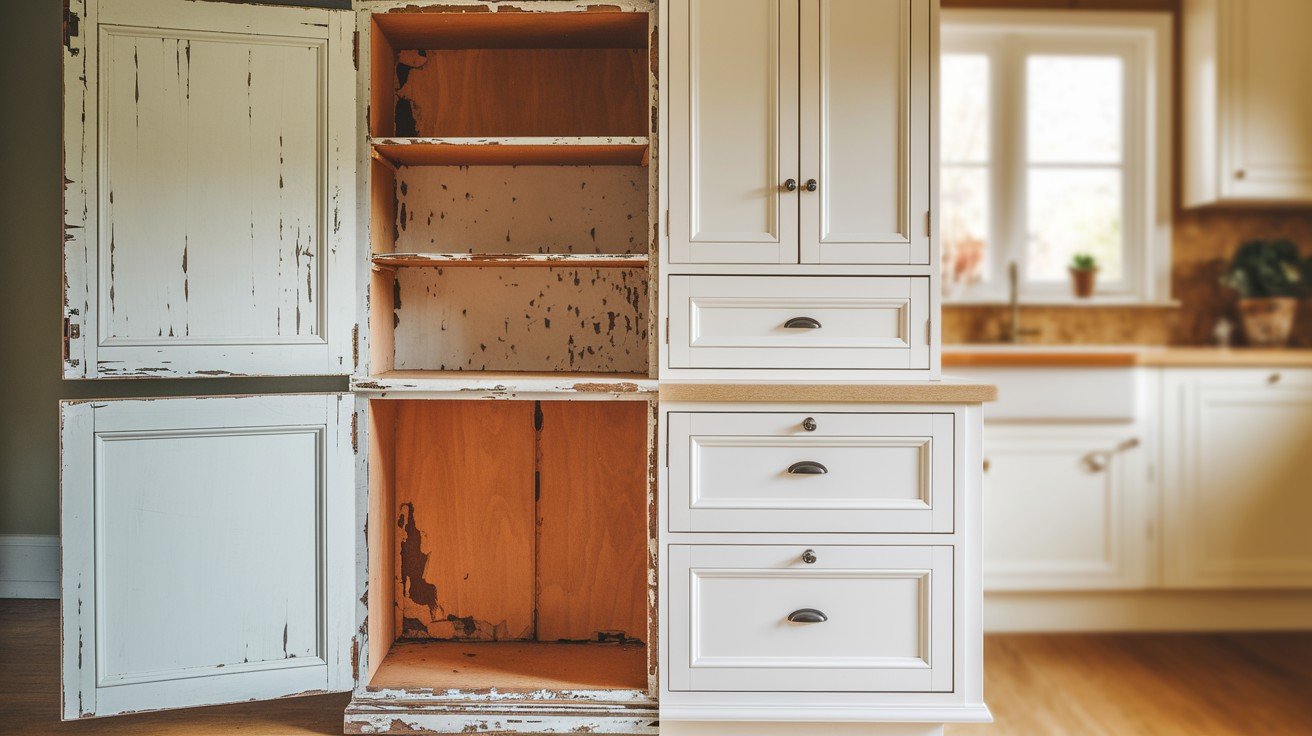
Some homeowners say refacing only changed how their kitchen looked without improving function or storage. They still had the same cramped layout and broken drawer slides as before.
Looking back, many wish they had saved a bit more money and replaced everything instead of just covering up old problems with new surfaces.
Why These Problems Happen
Most refacing failures trace back to four main causes that people overlook or rush through. Knowing these helps you avoid the same costly mistakes.
1. Low-Quality or Mismatched Materials
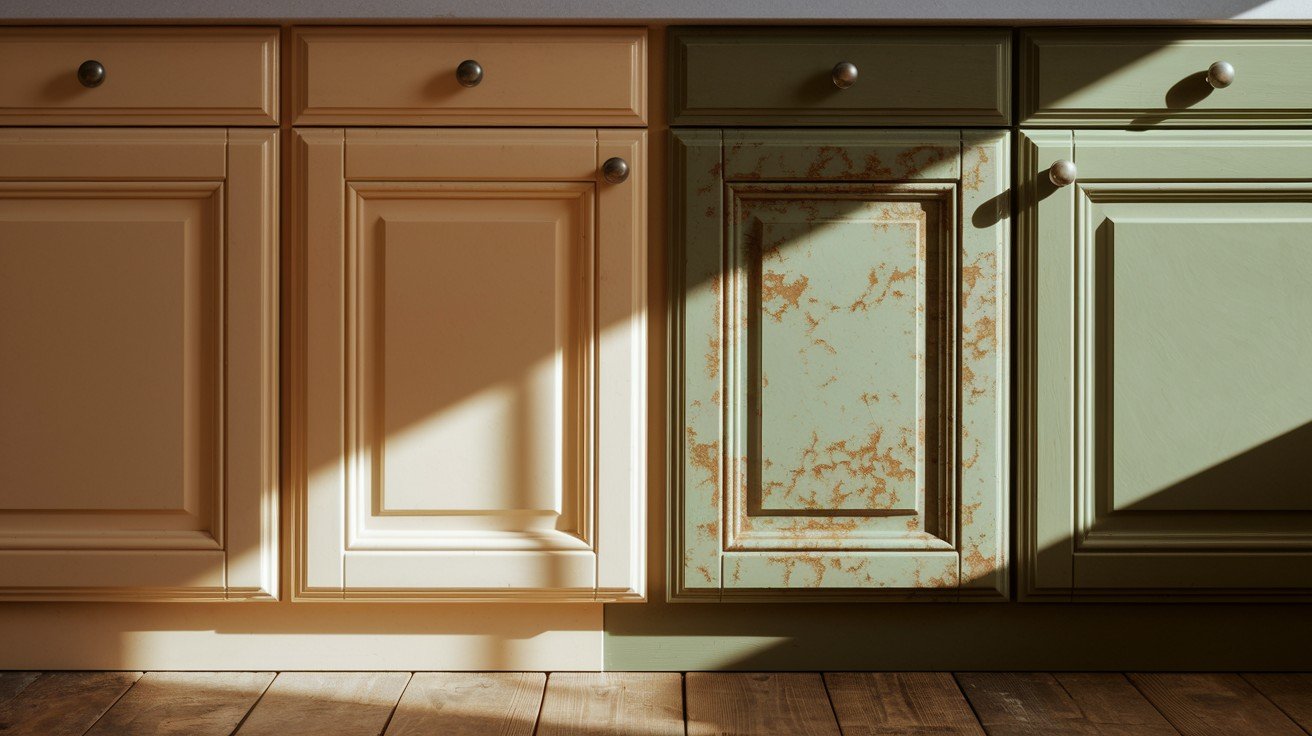
Cheap adhesive veneers often don’t match existing cabinet surfaces in texture or color, creating obvious patches that look wrong. Big box store materials seem like bargains until they start peeling within months.
Vinyl veneers warp and bubble near ovens, dishwashers, and sunny windows where heat builds up. Wood veneers cost more but handle kitchen conditions far better over time.
2. Skipped Surface Preparation
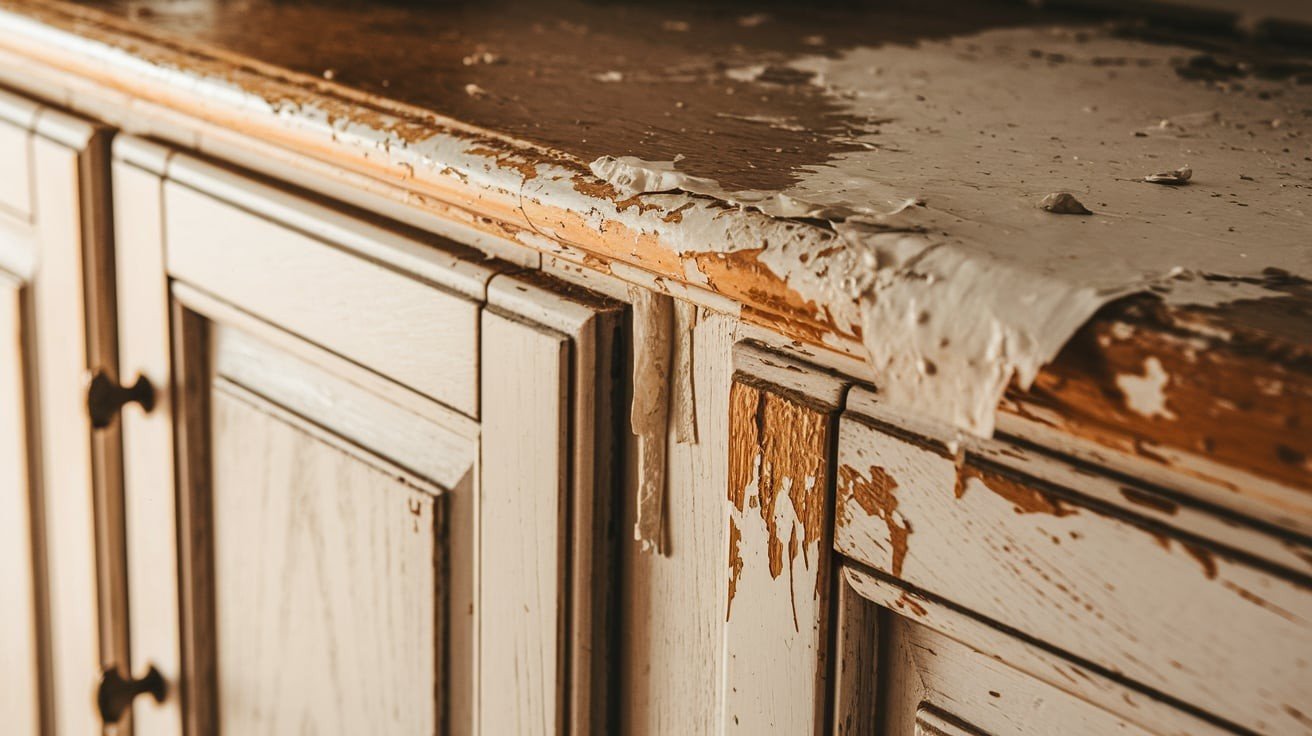
Years of cooking grease and soap residue create barriers that prevent new veneer from sticking. Many DIYers and budget contractors skip cleaning and sanding to save time.
Uneven surfaces with dents or scratches show through thin veneers and cause bubbling. Proper prep takes hours but determines success or failure.
3. Inaccurate Measurements or Fitment
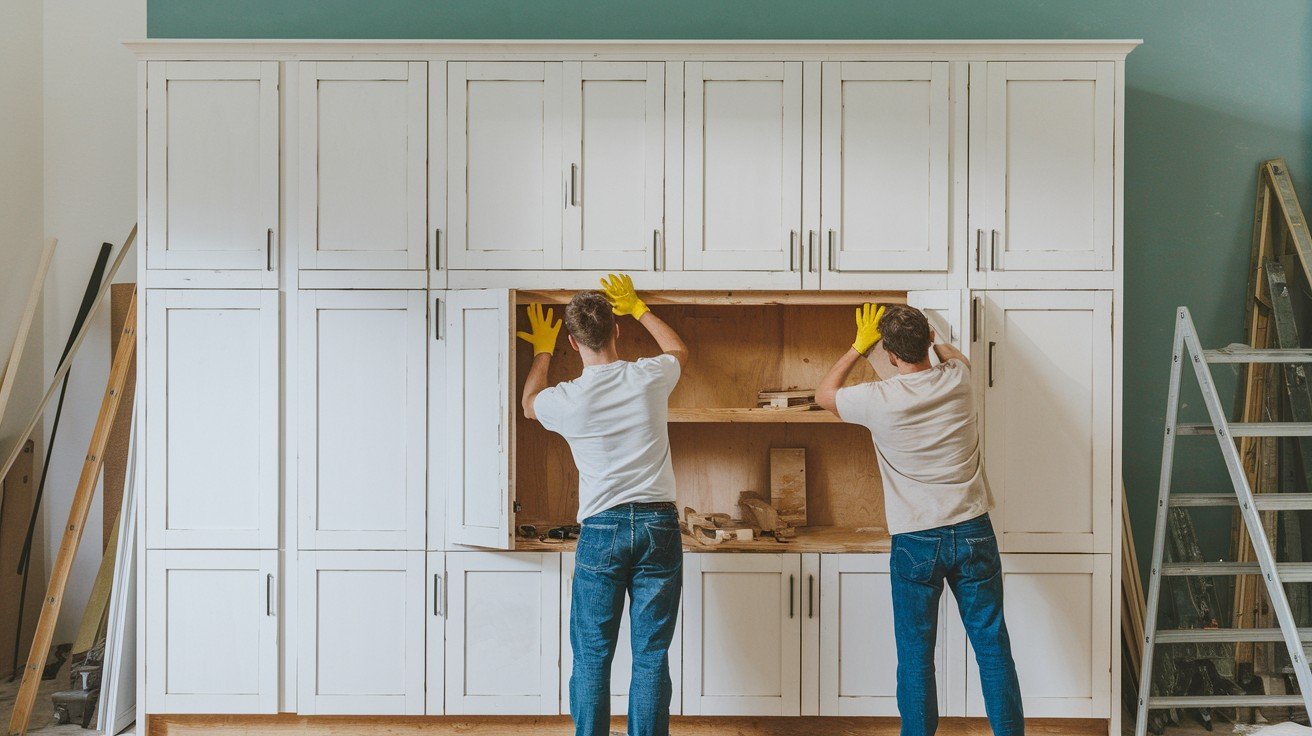
Small measuring errors create doors that expose hinges, overlap wrong, or rub against frames. Even being off by an eighth inch causes noticeable problems.
Cabinet boxes often settle or warp over decades, making them far from square. New doors cut to standard sizes won’t fit properly on crooked frames.
4. Cabinets Were Structurally Unsound to Begin With
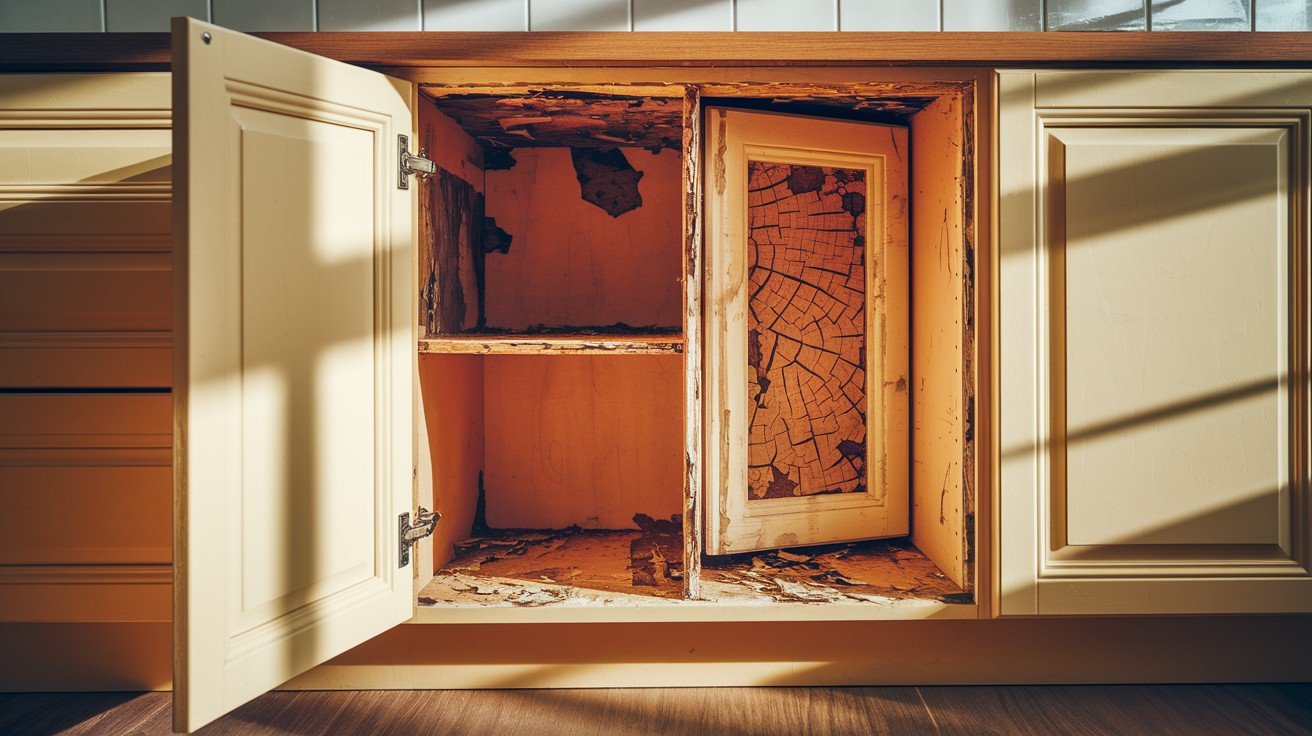
Many homeowners focus on looks without checking for water damage, loose joints, or rotted wood first. They assume the structure underneath is solid.
Refacing adds weight to boxes that may already be weak or damaged. New doors and hardware can cause wobbly cabinets to finally collapse completely.
Lessons Learned From Real-World Projects
Homeowners who’ve finished refacing projects share what they learned the hard way. Their advice helps others avoid common mistakes.
- Spend more time cleaning and prepping surfaces before starting
- Fix structural problems like loose hinges first
- Buy better materials instead of the cheapest options
- Solid cabinets with good layout that need a fresh look
- Rental properties or short-term updates
- Tight budgets with cabinets under 15 years old
- Test the adhesive on scrap wood first
- Label and bag all hardware before removal
- Use drilling jigs for handle placement
Real experiences show refacing works with proper planning, quality materials, and realistic time expectations.
Should You Reface or Replace?
Refacing makes sense when your cabinet boxes are structurally sound and you’re happy with your current kitchen layout. You save money and time while getting a fresh look that can last 10-15 years with proper installation.
Choose replacement if your cabinets are damaged, warped, or falling apart at the joints. Refacing won’t fix these underlying problems, and you’ll end up redoing the work within a few years anyway.
Replacement also works better when you want to change your kitchen layout, add more storage, or increase home value for resale. The higher upfront cost pays off with better function and longer-lasting results.
Conclusion
Cabinet refacing can save money and give your kitchen a fresh look-but only when done right. Poor prep work, cheap materials, and structural problems turn smart updates into expensive disasters.
Real homeowners teach us the most important lessons. Check your cabinet boxes for damage before you start. Clean and sand surfaces properly. Buy quality materials that handle kitchen heat and moisture.
Get quotes for both refacing and replacement before making your final choice. You might find the price difference is smaller than expected, especially after adding up all the hidden costs.
Smart planning and honest assessment of your cabinets make the difference between a successful project and costly regrets. Learn from others’ mistakes and choose the option that truly fits your situation.
FAQs
Is Cabinet Refacing a Good DIY Project for Beginners?
Yes, but only if you’re comfortable measuring precisely, working with adhesives, and taking your time. Mistakes are hard to fix, and expensive materials get wasted quickly.
Can I Reface Cabinets That Are Over 20 Years Old?
You can, but check that the boxes are structurally sound and square before starting. Older cabinets often have settling or water damage that makes refacing pointless.
What’s the Most Common Mistake in Cabinet Refacing?
Skipping proper cleaning and sanding causes poor adhesion and early failure. Grease and old finish prevent new veneer from sticking properly to cabinet surfaces.
How Long Does Refaced Cabinetry Last?
With proper prep and good materials, expect 10-20 years of solid performance. Cheap materials and poor installation may fail in just 2-5 years.
Is It Cheaper to Paint or Reface Kitchen Cabinets?
Painting costs less upfront, but doesn’t solve hardware issues or let you change door styles. Refacing gives you more options but costs significantly more.

